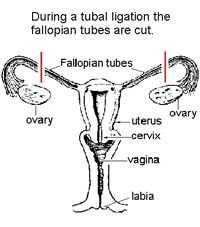Medical Contribution by Ricardo A. Yazigi, M.D.

Each year, a number of couples ask their doctor about reversing a tubal ligation (female) or a vasectomy (male), which are both permanent sterilization procedures. In such cases, the specialist will evaluate each individual’s situation and will determine whether other alternatives to recover fertility may be more desirable. Frequently, the option of in vitro fertilization (IVF) is part of the discussion.
The Reversal Process
Tubal ligation and vasectomy are relatively simple procedures performed in a minimally invasive fashion. In contrast, their reversal is a more complex matter and the surgery takes longer and is more invasive. In some instances, the original sterilization procedure has removed enough tissue to make the reversal procedure impossible. In other instances, after the procedure is performed, the fallopian tube (in the case of the female) or the vas deferens (in the case of the male) closes over time and the individual can become infertile again.

One particular risk of a tubal reversal is that of a tubal pregnancy, a situation that may put the patient at serious risk and needs to be addressed immediately. One issue with a vasectomy reversal is that it may take as long as three to six months for the sperm numbers to return to levels normal enough to produce a pregnancy. Another matter related to both procedures is that many times the couples want only one more child. Therefore, the concern about future birth control arises again after birth, and many resort to a repeat permanent sterilization procedure.
The Benefits of Choosing IVF
The age of the female is a crucial element in the decision for a tubal reversal or vasectomy reversal. At the peak of her fertility years, a woman’s chances to conceive are 20% to 25% each month and young fertile couples may take up to one year to conceive. But as the woman ages, the chance of pregnancy per month decreases considerably. This is where the alternative of IVF becomes relevant.
Success rates with IVF have increased considerably over the last few years. Now, women of all ages have higher chances of pregnancy with IVF than trying to conceive on their own. At 35 years and under, the chances of conception with IVF may be over 55% per attempt, which is twice the monthly chance of an average couple having regular sexual activity. In their forties, those chances may be around 20% to 25%, similar to the natural chances decades earlier. Furthermore, IVF produces immediate results and the long months of trying for pregnancy after tubal or vasectomy reversal are no longer necessary. And very importantly, contrary to people’s perception, multiple pregnancies can be kept down to a minimum with IVF.

For males who have had a prior vasectomy and choose to go through IVF instead of a reverse vasectomy, sperm is obtained for IVF directly from the epididymus (a procedure known as PESA) or the testicle (a procedure known as TESA) through a small needle, under local anesthesia. These procedures only take a few minutes and are relatively simple.
Thus, if the female in the couple is in her late thirties or older; if the interest is to have only one more child; or if the couples’ desire is to achieve pregnancy soon, IVF becomes a better choice than a tubal or vasectomy reversal.
If you would like to schedule an appointment with a fertility specialist, please speak with one of our New Patient Liaisons at 877-971-7755.





